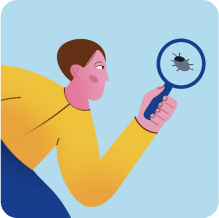AI tools for UX testing help designers and developers test their interfaces to identify potential usability issues and improve the user experience. They measure ease of use, navigation, responsiveness, and accessibility. User testing and feedback can help you optimise your interfaces to provide a seamless and enjoyable user experience.
You’re looking at a game-changing shift in how we test user experiences. AI tools now handle the heavy lifting as they’ll automatically spot usability issues, predict user behaviour, and even analyse emotional responses to your designs. They’re also picking up visual bugs and accessibility problems you might miss.
Integrating one AI tool for automated accessibility audits alongside your current A/B tests and heatmaps will help you a lot. Most teams see nearly doubled issue detection rates within the first month.
The unexpected part is that these AI tools aren’t replacing your classic testing methods – they’re making them smarter. Your session replays become more targeted, and your usability tests focus on the right problems from day one. Choosing the right UX/UI testing tool depends on your needs, budget, and technical expertise. Incorporating UX/UI testing tools with AI into your design will help you create interfaces that delight users and drive business success.
Emerging AI Trends in UX/UI Testing
AI has been reshaping how we think about UX/UI testing, and the changes are pretty remarkable. You’re no longer stuck with basic scripting when modern tools can auto-generate tests straight from your design files, predict how users behave, and catch accessibility problems before they become headaches.
Here’s what gets interesting: AI can now tell the difference between content that’s supposed to change (like live data feeds) and actual visual bugs that need fixing. Some tools even run emotion recognition to pinpoint exactly where users get frustrated, plus they create heatmap predictions showing where attention goes, all without recruiting a single test participant.
But you need to start with one AI tool for visual regression testing – it’s the easiest win and builds confidence fast. Keep your human testers in the loop, though, because AI still misses context that feels obvious to people. The sweet spot happens when you blend both approaches rather than replacing one with the other.
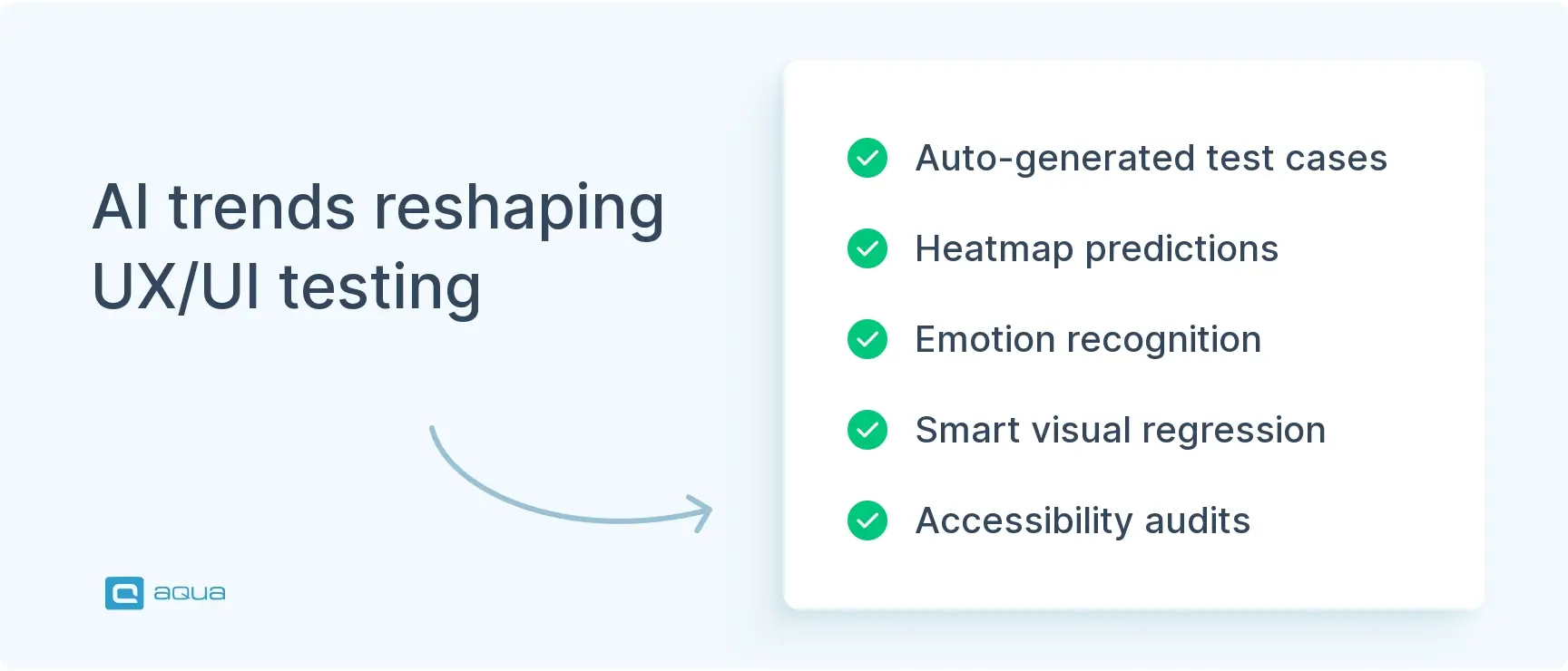
1. Applitools
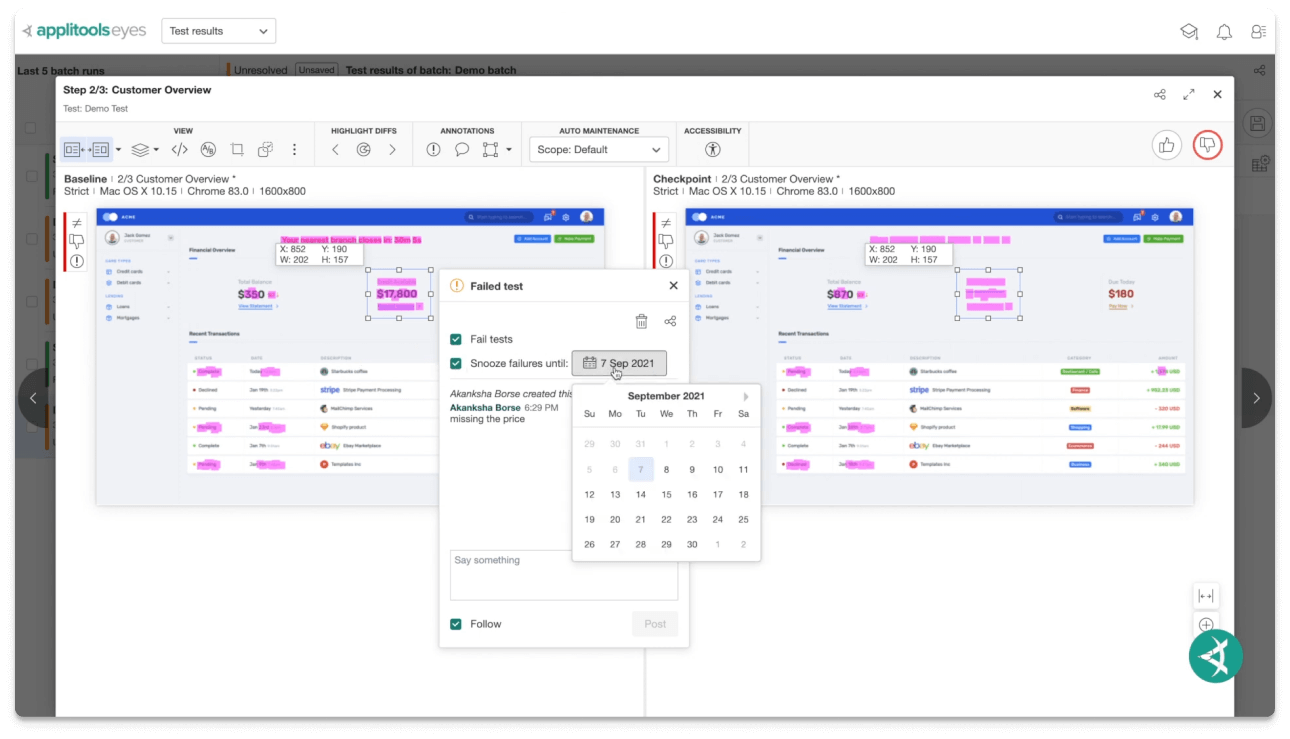
Applitools is a cloud-based software platform that uses AI and machine learning to improve the application’s visual quality and UX. Its visual testing capabilities allow users to compare screenshots of different versions of the app or website and identify bugs in the design implementation missed by traditional automated testing.
Applitools uses smart Visual AI to catch real UI problems across web, mobile, and desktop – while filtering out the noise. Instead of drowning in false alarms, you’ll spot only the changes that actually matter to users.
Start by testing your most critical user flow on just 3-4 browser combinations. This approach nearly doubles issue detection accuracy compared to scattered testing. Applitools often reveals design inconsistencies that manual testing completely misses, especially subtle spacing shifts that degrade user experience over time.
Pros:
- Easy to use
- Compatible with many programming languages and tools
- Accurate visual AI
Cons:
- Non-intuitive web interface
- Expensive in comparison to other tools
- Poor documentation from time to time
"When UX doesn't consider ALL users, shouldn't it be known as “SOME User Experience" or… SUX?"
2. UserZoom

UserZoom is another cloud-based platform that provides an all-in-one UX research and testing solution. It has different tools and features for surveys, user testing, and other types of UX research, as well as analytics and reporting to help you analyse and understand your data.
UserZoom’s key feature is its use of AI and machine learning to generate insights from user testing data. It helps you identify patterns and trends in user behaviour and provide recommendations to improve the user experience. UserZoom also has many testing methods, including usability testing, card sorting, tree testing, and more.
Pros:
- Comprehensive features for UX research
- AI-powered data insights
- Robust reporting
Cons:
- High costs for relatively small teams and companies
- Difficult to navigate initially
- Limited customisation
Imagine a world where redundant tests are automatically removed, prioritisation is based on criticality, and relevant test cases are suggested effortlessly. This isn’t just a dream; it’s the reality with aqua. Embracing AI-powered testing will keep you ahead of the curve and maintain a competitive edge. So, why settle for the ordinary when you can elevate your testing process with aqua? Your journey to testing excellence begins with aqua.
Embrace AI and go beyond UX/UI in your testing efforts
3. Maze
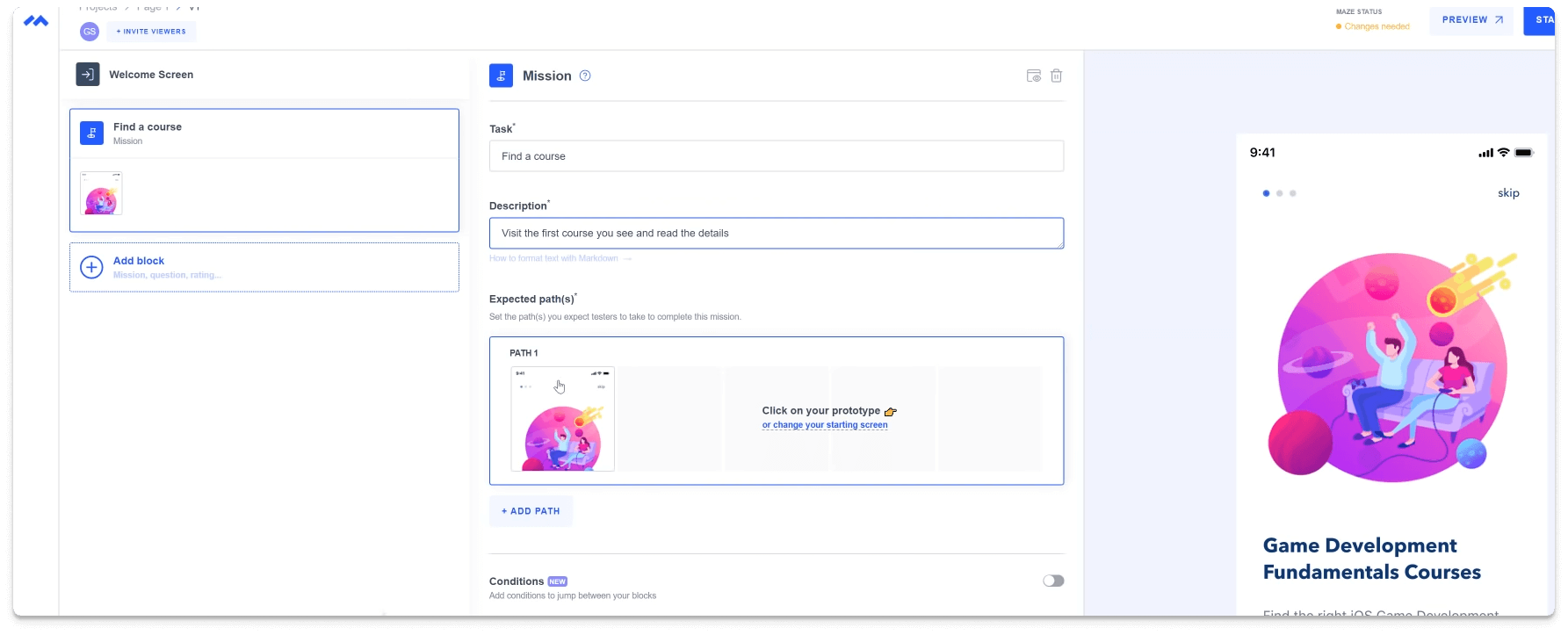
The next UI testing tool on our list — Maze, is a platform that leverages machine learning to offer valuable insights into user behaviour and identify flaws in your designs. It is specifically designed to facilitate usability testing and user testing for digital products such as websites and applications. Maze provides a user-friendly interface that allows you to create and conduct tests efficiently.
With Maze, you can also generate actionable user behaviour insights. By analysing user interactions and patterns, you can understand how users navigate and interact with your designs. This enables you to make data-driven decisions and identify areas to enhance your designs for better user experiences.
Pros:
- User-friendly interface
- Quick and efficient testing via fast integrations
- Comprehensive machine learning insights
Cons:
- Limited testing options outside usability testing
- Overreliance on user interaction data
- The learning curve for advanced features
4. Testim
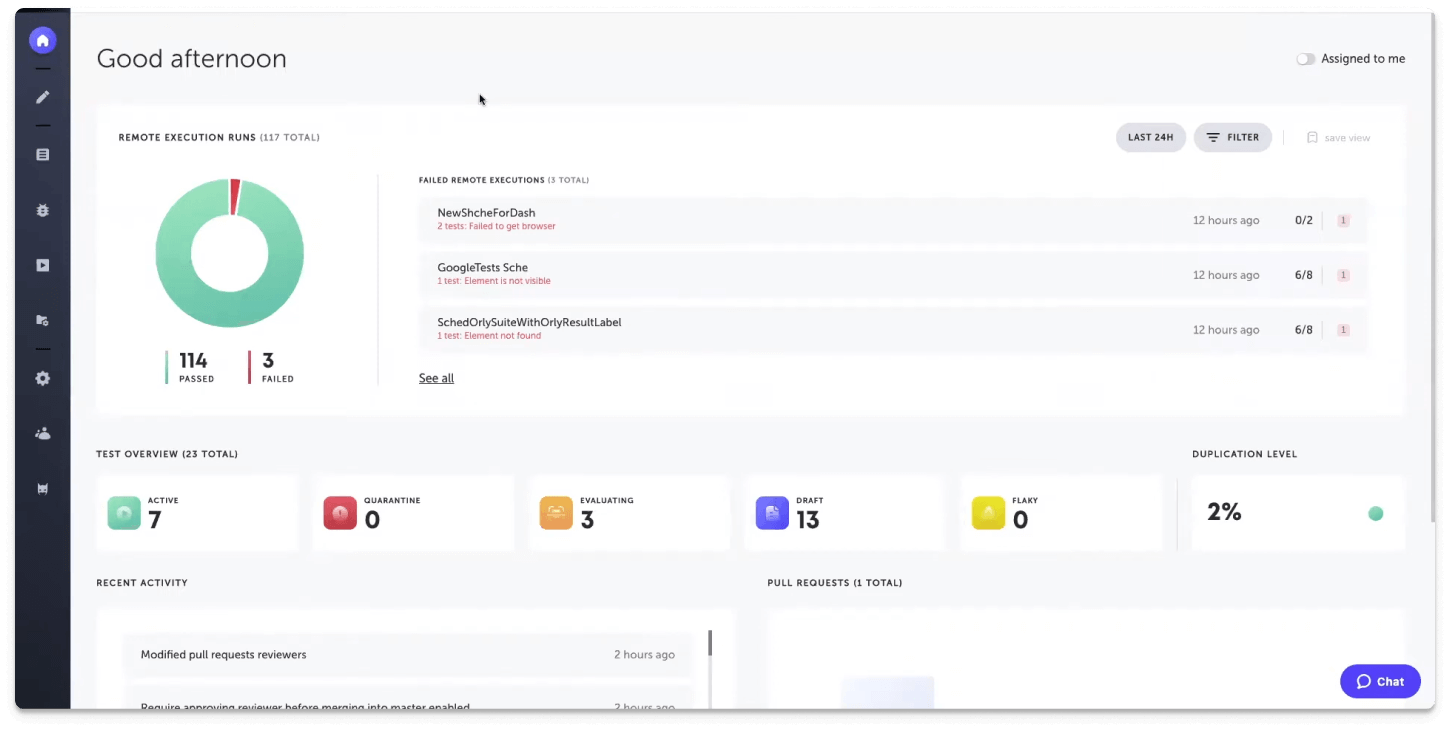
Testim is another AI-powered UX/UI testing tool designed to help developers and quality assurance teams identify bugs and provide faster feedback to design teams. The tool leverages machine learning algorithms to analyse application behaviour and automatically generate test scripts to compare front-end implementation against the design. This AI-driven approach helps reduce the time and effort required to create and maintain test cases. Testim’s AI can learn from changes made to the application, adapt the test scripts accordingly, and suggest updates as needed.
Another significant feature of Testim is its ability to provide fast feedback to design teams. It enables you to run tests continuously, allowing for rapid detection and resolution of bugs. This quick feedback loop ensures that you can address issues fast and efficiently, resulting in better communication between design and development teams.
Pros:
- Ability to record steps easily and accurately
- User-friendly interface with a drag-and-drop editor
- Integrations with popular development and collaboration tools
Cons:
- Non-transparent pricing
- Customisation issues
- Lack of mobile testing automation solutions
As you explore the AI-powered tools for UI/UX testing, keep in mind that the landscape is continually evolving. These tools offer valuable insights into user behaviour and help you refine your designs for exceptional user experiences. However, to truly excel in test management and deliver superior user experiences consistently, you should consider an all-in-one QA test management tool like aqua cloud. Bringing 20 years of experience to the table, aqua goes beyond traditional testing tools, offering a revolutionary approach to test management. With its advanced AI capabilities including automatic requirements, test cases and test data generation, aqua optimises your testing efforts and takes away the pain of testing.
Get more than UX/UI testing; optimise 100% of your efforts with an AI-powered solution
5. UserTesting
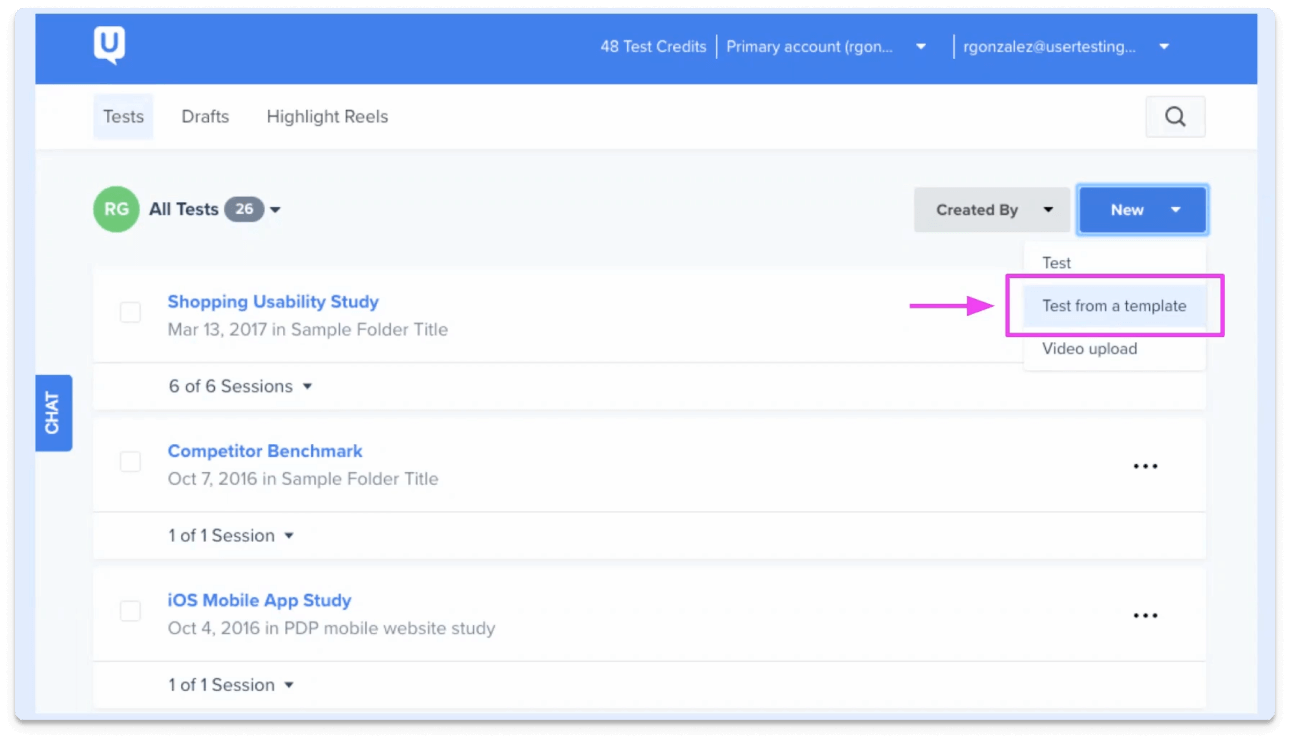
UserTesting is the next AI tool for UI testing on our list, and it is a comprehensive tool that helps you ensure the quality and usability of your digital products. The main value, however, does not necessarily come from regular testing features found in other solutions.
UserTesting offers a large pool of real users who provide feedback on websites, mobile apps, prototypes, and more. By providing valuable feedback and insights, UserTesting allows for both moderated and unmoderated testing, providing flexibility in testing methodologies. It also enables testing in multiple locales, allowing you to assess the user experience in different markets and cultural contexts. This is particularly beneficial for localisation testing, as it allows for market-tailored UI/UX decisions to be incorporated into the testing process, ensuring a seamless user experience across diverse regions and languages
Pros:
- Straightforward test writing format and analysis
- Affordable for smaller companies
- Excellent customer support
Cons:
- Limited control over the test environment
- Outsourcing the search for external testers can bite you later
- Difficult navigation from time to time
6. TestComplete
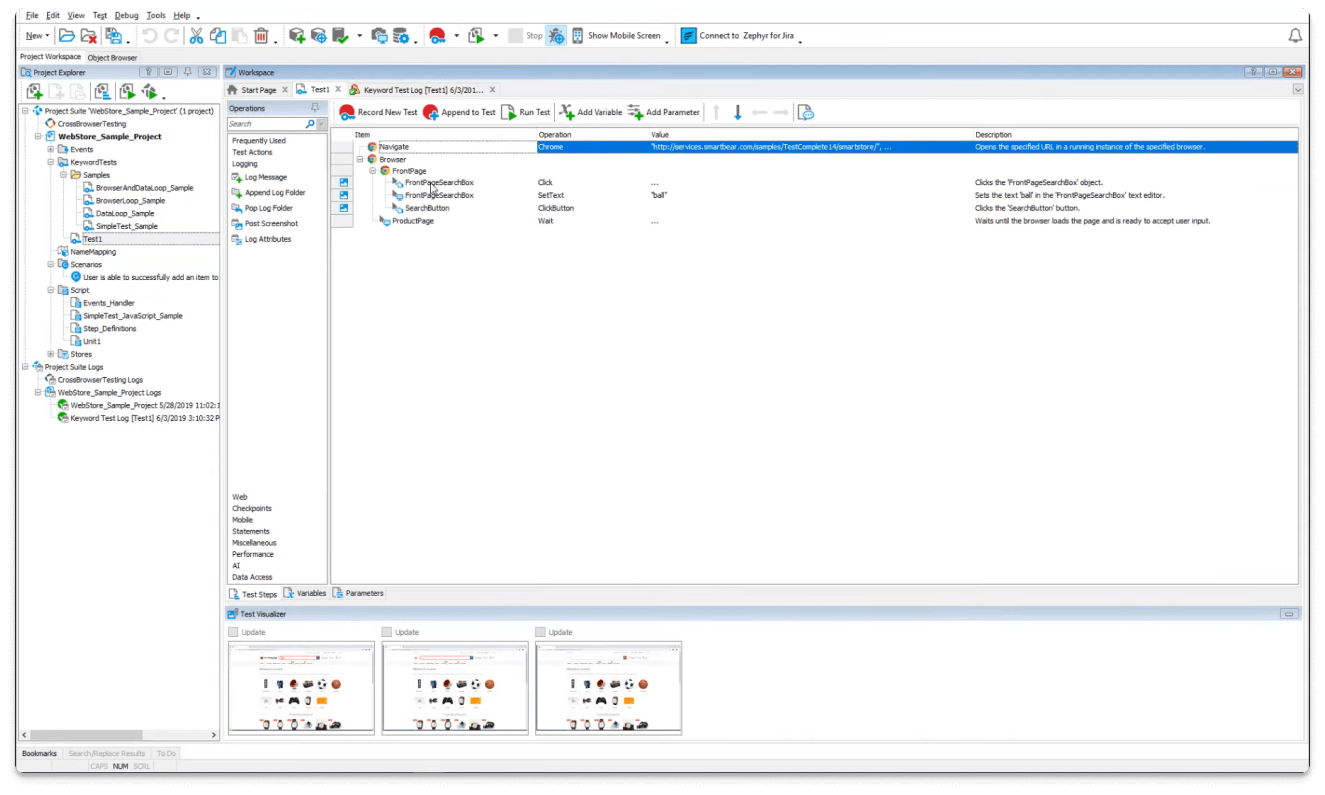
TestComplete is a powerful and comprehensive automated testing tool offering specific UI/UX testing features. It supports various applications, including web, mobile, and desktop, and provides a number of UI-specific testing features to verify UI elements, responsiveness, and visual aspects. With TestComplete, you can create automated tests that interact with the UI of their applications.
The tool also offers a visual test recorder that allows you to create tests without extensive coding knowledge and makes it accessible to aspiring QA specialists and even people without a tech background. Additionally, TestComplete supports a wide range of scripting languages, such as JavaScript, VBScript, and Python, enabling advanced customisation and scripting for complex scenarios.
Pros:
- Helpful visual test recorder
- Rich set of built-in test actions and assertions for UX/UI
- Support for a wide range of scripting languages
Cons:
- The learning curve for new users
- Limited customisation for complex scenarios
- Higher licensing and maintenance costs
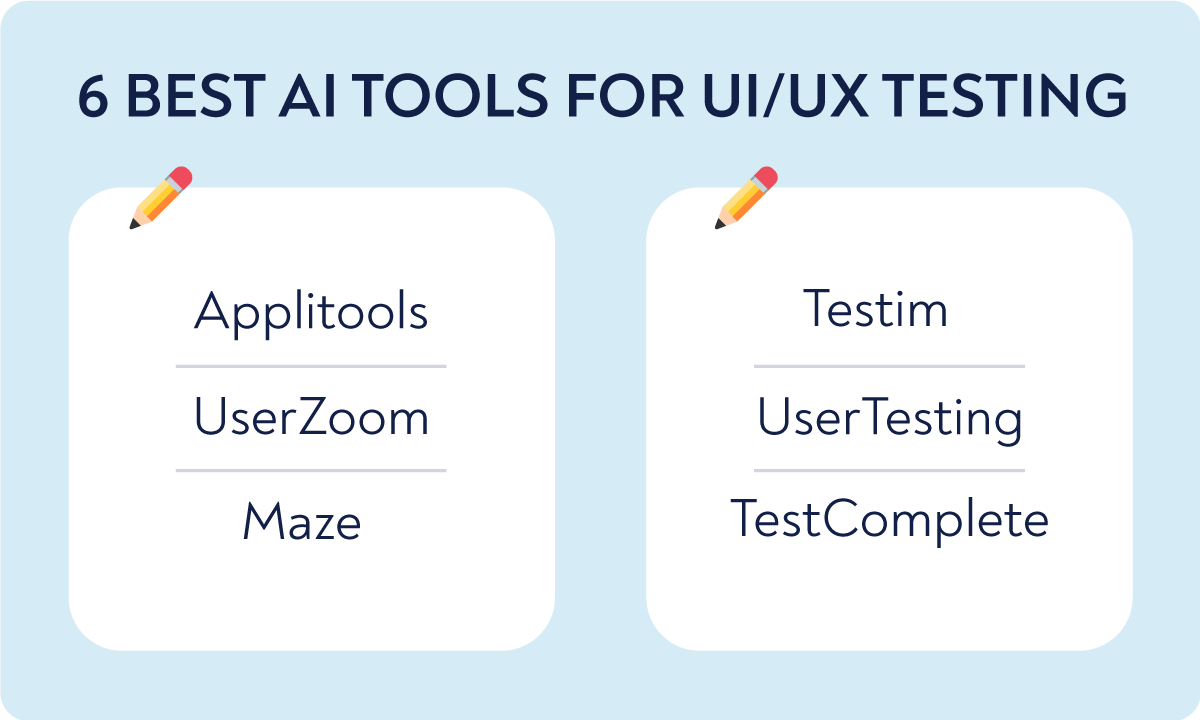
Tips for Effective AI-Powered UX/UI Testing
Do you want to get real value from AI-powered UX/UI testing? Start by pinpointing your biggest pain points: those flaky test scripts that break every release, regression cycles that drag on forever, or accessibility gaps you keep missing. Then match specific AI tools to those problems instead of trying to solve everything at once.
Keep your team involved. AI is fantastic at grinding through repetitive checks and spotting patterns humans miss, but you still need human eyes on design decisions and user flow logic. You can nearly double test coverage without sacrificing quality.
Also, wire your AI testing tools directly into your CI/CD pipeline. This gives you instant feedback on every code push rather than waiting for manual test runs. Track your ‘time to feedback’ metric before and after implementation; most teams see this drop from hours to minutes.
Watch out for the ‘shiny tool syndrome’ though. Don’t get caught chasing every new AI feature that comes out. Pick your stack, learn it well, then adapt gradually as your needs change. Smoothest user experiences in 2025 aren’t about using the most AI tools; it’s about using the right ones consistently.
Conclusion
In the ever-evolving digital landscape, you just can not ignore or understate the importance of UX/UI testing. Companies must deliver seamless user experiences that drive customer satisfaction and loyalty. With the advent of AI-powered testing tools, QA professionals now have powerful resources to achieve this via high-quality software.
By harnessing the capabilities of AI in UX/UI testing, you can gain valuable insights into user behaviour, identify areas for improvement, and make data-driven decisions to enhance your designs. These tools allow you to optimise test management, reduce manual effort, and deliver exceptional user experiences.
If you want to optimise and streamline your testing efforts with an AI-powered software testing tool, you should consider aqua. The advanced QA-tuned artificial intelligence model simplifies your daily work by suggesting highly relevant test cases and helping you scale them. With aqua’s AI, you can also automatically remove duplicate tests and prioritise the most essential ones while delivering faster results than any human.
Supercharge your testing efficiency and gain actionable insights with aqua's AI













